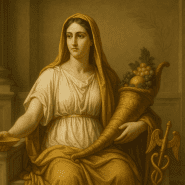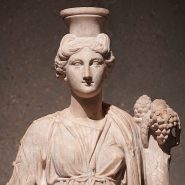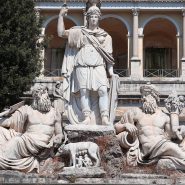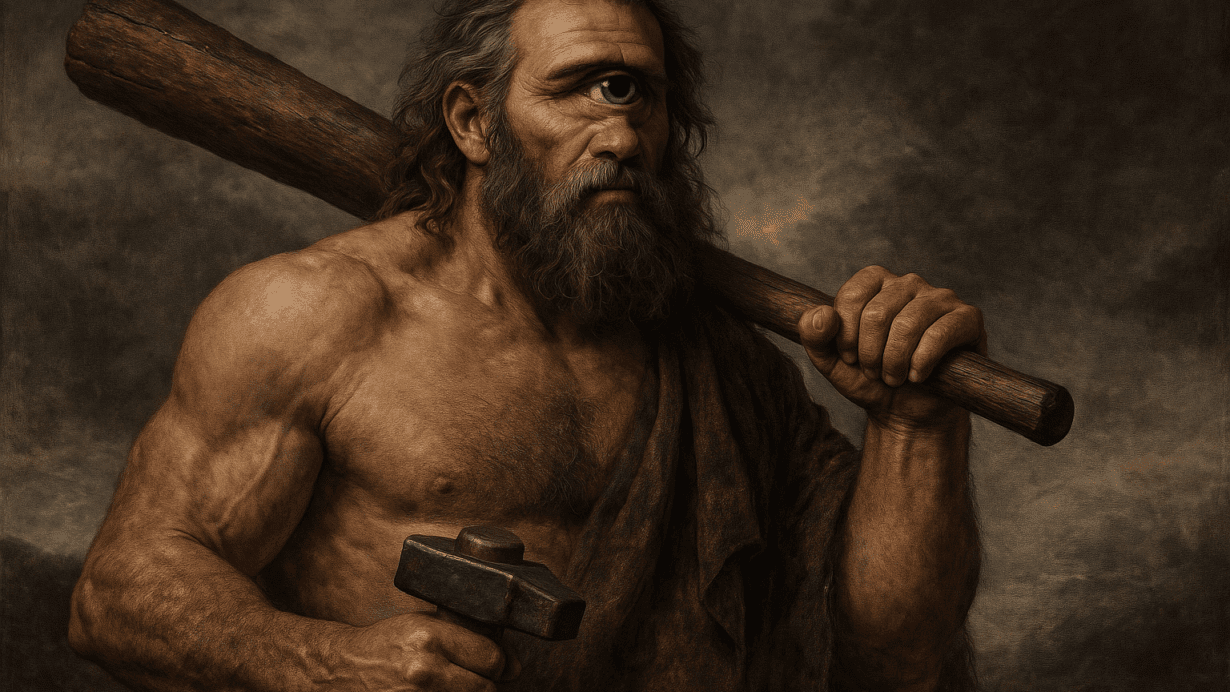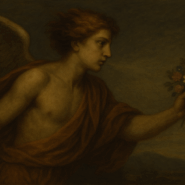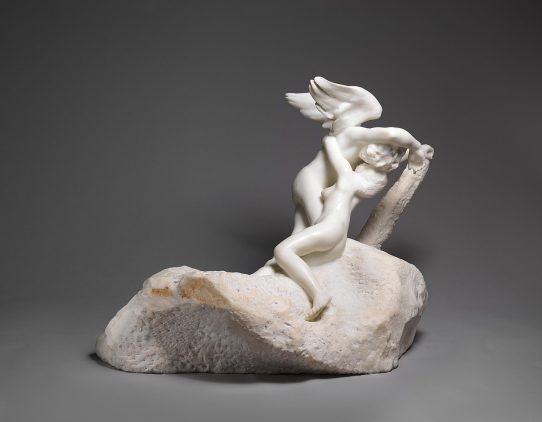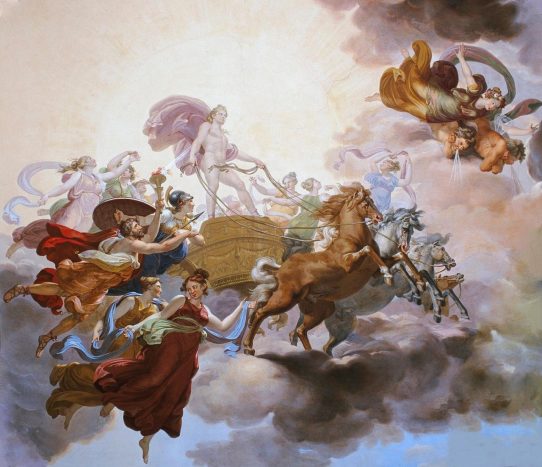QUICK SUMMARY
The Cyclopes were one-eyed giants known for their strength, craftsmanship, and thunderous power. In Greek and Roman tradition, they appear in two forms: the divine Cyclopes who forged the thunderbolts of Jupiter, and the pastoral, often savage Cyclopes like Polyphemus. Their stories bridge creation myths, heroic adventures, and the divine machinery of the cosmos.
The Cyclopes (plural, cyclops is the singular form) stand among the most striking figures in ancient mythology. Their single eye, enormous stature, and booming presence made them unforgettable to ancient storytellers. Although often cast as monsters, their role was far more complex.
In early Greek tradition, they were creators and divine craftsmen. In later literature, they became shepherds living in wild isolation. Through Roman adaptation, these images merged, forming a rich tapestry of myths that shaped how the ancient world understood power, violence, and raw creation.
Origins of The Cyclopes
In Greek cosmogony, the Cyclopes were the sons of Uranus and Gaia. The first three Cyclopes — Brontes, Steropes, and Arges — were divine smiths associated with thunder, lightning, and celestial fire. Imprisoned by their father Uranus, and later freed by Jupiter during the Titanomachy, they became instrumental allies of the king of the gods.
The Romans inherited these figures and integrated them into their own cosmology, focusing especially on their craftsmanship. In Roman retellings, the Cyclopes worked tirelessly in the subterranean forges of Vulcan, shaping weapons that altered the fate of gods and mortals alike.
The Two Traditions of The Cyclopes
Over centuries, the idea of the Cyclopes split into two distinct traditions, each with its own role in mythology.
The Divine Smiths
The first tradition portrays the Cyclopes as immortal craftsmen of unparalleled skill. Their workshops lay deep beneath volcanoes, especially Mount Etna. Here, they forged:
- Jupiter’s thunderbolts
- Neptune’s trident
- Pluto’s helm of invisibility
- Weapons for heroes and gods
- Implements of divine punishment
Their single eye symbolized focus, precision, and the consuming nature of fire. They were not simple brutes. They were creators whose work shaped the architecture of divine conflict.
The Savage Shepherds
The second tradition describes the Cyclopes as pastoral giants living on remote islands. These Cyclopes were lawless, solitary, and untouched by the structures of civilization. The most famous of them, Polyphemus, appears in the adventures of Odysseus, where he embodies brute strength, raw appetite, and resistance to the rules of guest-friendship.
Roman poets such as Virgil and Ovid preserved these tales, weaving them into stories of love, jealousy, and tragic longing, transforming Polyphemus from a terrifying monster into a figure capable of emotion and musical yearning.
The Cyclopes In Greek and Roman Storytelling
The Cyclopes appear across many foundational myths, often at turning points where creation, destruction, or transformation occurs.
The Titanomachy
During Jupiter’s war against the Titans, the god released the divine Cyclopes from their imprisonment. In gratitude, they forged his defining weapon: the thunderbolt. This act was essential to Jupiter’s victory and the establishment of cosmic order.
The Forge Of Vulcan
Roman writers frequently depict the Cyclopes laboring in Vulcan’s underground workshop. The rhythmic pounding of their hammers echoed through volcanic chambers, linking the earthquakes and eruptions witnessed by ancient people to the work of divine smiths.
The Encounter With Odysseus
The most enduring literary moment involving a Cyclops comes from the story of Odysseus. Polyphemus, living in a world without laws, captured the hero’s men and devoured some of them. Through cunning rather than strength, Odysseus escaped by blinding the giant with a sharpened stake, fulfilling one of mythology’s great contests between intellect and brute force.
Roman poets reimagined this story, adding layers of emotion. In Ovid’s Metamorphoses, Polyphemus falls hopelessly in love with the sea-nymph Galatea, singing songs of unrefined tenderness. This version humanized the giant, revealing a creature capable of longing despite his monstrous appearance.
Appearance and Symbolism
Cyclopes were depicted as massive, muscular beings with a single round eye in the center of their forehead. Their features depended on the tradition:
- Divine Cyclopes were sturdy, disciplined artisans, often shown with tools, hammers, and heated metal.
- Savage Cyclopes appeared more rugged, surrounded by sheep, caves, and primitive landscapes.
The single eye became a powerful symbol. It represented concentrated perception, unblinking focus, and sometimes the limitations of unchecked power. The Cyclopes embodied both the gifts and dangers of raw elemental force.
Nature And Personality
While often portrayed as violent or chaotic, the Cyclopes were not universally malevolent. Their personalities varied:
- Brontes, Steropes, and Arges were loyal, disciplined craftsmen who served divine order.
- Polyphemus was both monstrous and capable of passion, a figure trapped between wild instinct and emotional yearning.
- Other pastoral Cyclopes were indifferent to outsiders and lived according to their own untamed customs.
This duality made the Cyclopes especially compelling to ancient poets. They could represent primal danger, divine creativity, or misunderstood solitude depending on the story.
The Cyclopes And The Natural World
To ancient people, the Cyclopes helped explain powerful and mysterious natural phenomena. The ringing of metal, the glow of molten rock, and the violent eruption of volcanoes suggested the hidden workings of divine craftsmen. In volcanic regions, these associations were particularly strong.
The pastoral Cyclopes, by contrast, represented uncultivated wilderness. They lived without cities, laws, or agriculture, offering a dramatic contrast to the ordered world of the Greeks and Romans. Through them, myth explored the tension between civilization and wild nature.
Legacy And Influence
The Cyclopes left a deep mark on Western imagination. Painters, sculptors, and writers continued to reinterpret them across centuries:
- Renaissance artists rendered the divine Cyclopes as heroic smiths.
- Romantic poets saw in Polyphemus a tragic, yearning spirit.
- Modern adaptations blend fear and fascination, exploring the Cyclops as a symbol of otherness.
The Cyclopes endure because they embody contradiction: creators and destroyers, monsters and craftsmen, threats and protectors. They reveal the ancient belief that even the most frightening beings could play vital roles in shaping the world.
Conclusion
The Cyclopes occupy a unique place in Greek and Roman myth. Their dual nature reflects the ancient struggle to understand forces beyond human control. Whether forging weapons for the gods or living in rugged isolation, they remind us that power comes in many forms. Their stories endure because they capture the ancient worldview in all its complexity: the harmony of creation and destruction, the balance between civilization and the wild, and the deep fascination with beings who stand at the edge of the known world.
